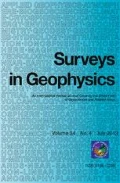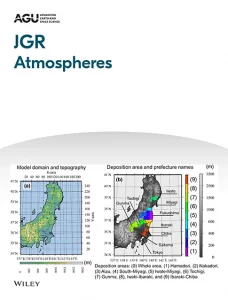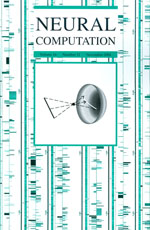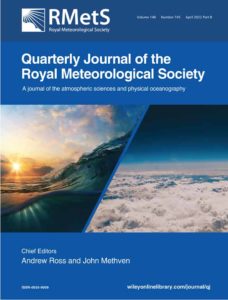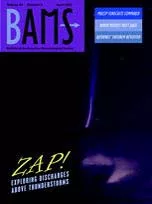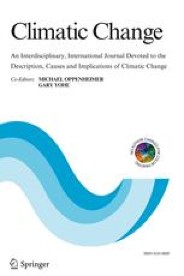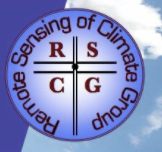Publications
2024
G. Tselioudis, W. B. Rossow; Remillard, J.
Oceanic cloud trends during the satellite era and their radiative signatures Journal Article
In: Climate Dynamics, vol. 62, pp. 9319-9332, 2024, ([Accessed 22-01-2025]).
Abstract | Links | BibTeX | Tags: ANALYSIS, CLOUD PROPERTIES, ISCCP, Radiation
@article{springerOceanicCloud,
title = {Oceanic cloud trends during the satellite era and their radiative signatures },
author = {Tselioudis, G., W.B. Rossow, F. Bender, L. Oreopoulos and J. Remillard},
url = {https://link.springer.com/article/10.1007/s00382-024-07396-8undefined,
https://www.williambrossow.com/wp-content/uploads/2025/01/2024_Tselioudisetal24.pdf},
doi = {10.1007/s00382-024-07396-8},
year = {2024},
date = {2024-08-18},
urldate = {2024-08-18},
journal = {Climate Dynamics},
volume = {62},
pages = {9319-9332},
abstract = {The present study analyzes zonal mean cloud and radiation trends over the global oceans for the past 35 years from a suite of satellite datasets covering two periods. In the longer period (1984\textendash2018) cloud properties come from the ISCCP-H, CLARA-A3, and PATMOS-x datasets and radiative properties from the ISCCP-FH dataset, while for the shorter period (2000\textendash2018) cloud data from MODIS and CloudSat/CALIPSO and radiative fluxes from CERES-EBAF are added. Zonal mean total cloud cover (TCC) trend plots show an expansion of the subtropical dry zone, a poleward displacement of the midlatitude storm zone and a narrowing of the tropical intertropical convergence zone (ITCZ) region over the 1984\textendash2018 period. This expansion of the ‘low cloud cover curtain’ and the contraction of the ITCZ rearrange the boundaries and extents of all major climate zones, producing a more poleward and narrower midlatitude storm zone and a wider subtropical zone. Zonal mean oceanic cloud cover trends are examined for three latitude zones, two poleward of 50 ° and one bounded within 50oS and 50oN, and show upward or near-zero cloud cover trends in the high latitude zones and consistent downward trends in the low latitude zone. The latter dominate in the global average resulting in TCC decreases that range from 0.72% per decade to 0.17% per decade depending on dataset and period. These contrasting cloud cover changes between the high and low latitude zones produce contrasting low latitude cloud radiative warming and high latitude cloud radiative cooling effects, present in both the ISCCP-FH and CERES-EBAF datasets. The global ocean mean trend of the short wave cloud radiative effect (SWCRE) depends on the balance between these contrasting trends, which in the CERES dataset materializes as a SW cloud radiative warming trend of 0.12 W/m2/decade coming from the dominance of the low-latitude positive SWCRE trends while in the ISCCP-FH dataset it manifests as a 0.3 W/m2/decade SW cloud radiative cooling trend coming from the dominance of the high latitude negative SWCRE trends. The CERES cloud radiative warming trend doubles in magnitude to 0.24 W/m2/decade when the period is extended from 2016 to 2022, implying a strong cloud radiative heating in the past 6 years coming from the low latitude zone.},
howpublished = {urlhttps://link.springer.com/article/10.1007/s00382-024-07396-8},
note = {[Accessed 22-01-2025]},
keywords = {ANALYSIS, CLOUD PROPERTIES, ISCCP, Radiation},
pubstate = {published},
tppubtype = {article}
}
Stubenrauch, Claudia J.; Kinne, Stefan; Mandorli, Giulio; Rossow, William B.; Winker, David M.; Ackerman, Steven A.; Chepfer, Helene; Di Girolamo, Larry; Garnier, Anne; Heidinger, Andrew; Karlsson, Karl-Göran; Meyer, Kerry; Minnis, Patrick; Platnick, Steven; Stengel, Martin; Sun-Mack, Szedung; Veglio, Paolo; Walther, Andi; Cai, Xia; Young, Alisa H.; Zhao, Guangyu
Lessons Learned from the Updated GEWEX Cloud Assessment Database Journal Article
In: Surveys in Geophysics, 2024, ISBN: 1573-0956.
Abstract | Links | BibTeX | Tags: ANALYSIS, CLOUD PROPERTIES, GEWEX, ISCCP, RADIATION EXCHANGES
@article{nokey,
title = {Lessons Learned from the Updated GEWEX Cloud Assessment Database },
author = {Stubenrauch, Claudia J. and Kinne, Stefan and Mandorli, Giulio and Rossow, William B. and Winker, David M. and Ackerman, Steven A. and Chepfer, Helene and Di Girolamo, Larry and Garnier, Anne and Heidinger, Andrew and Karlsson, Karl-G\"{o}ran and Meyer, Kerry and Minnis, Patrick and Platnick, Steven and Stengel, Martin and Sun-Mack, Szedung and Veglio, Paolo and Walther, Andi and Cai, Xia and Young, Alisa H. and Zhao, Guangyu},
url = {https://www.williambrossow.com/wp-content/uploads/2024/04/2024_Stubenrauch_et_al-2024-Surveys_in_Geophysics.pdf},
doi = {10.1007/s10712-024-09824-0},
isbn = {1573-0956},
year = {2024},
date = {2024-02-09},
journal = {Surveys in Geophysics},
abstract = {Since the first Global Energy and Water Exchanges cloud assessment a decade ago, existing cloud property retrievals have been revised and new retrievals have been developed. The new global long-term cloud datasets show, in general, similar results to those of the previous assessment. A notable exception is the reduced cloud amount provided by the Cloud-Aerosol Lidar and Infrared Pathfinder Satellite Observation (CALIPSO) Science Team, resulting from an improved aerosol\textendashcloud distinction. Height, opacity and thermodynamic phase determine the radiative effect of clouds. Their distributions as well as relative occurrences of cloud types distinguished by height and optical depth are discussed. The similar results of the two assessments indicate that further improvement, in particular on vertical cloud layering, can only be achieved by combining complementary information. We suggest such combination methods to estimate the amount of all clouds within the atmospheric column, including those hidden by clouds aloft. The results compare well with those from CloudSat-CALIPSO radar\textendashlidar geometrical profiles as well as with results from the International Satellite Cloud Climatology Project (ISCCP) corrected by the cloud vertical layer model, which is used for the computation of the ISCCP-derived radiative fluxes. Furthermore, we highlight studies on cloud monitoring using the information from the histograms of the database and give guidelines for: (1) the use of satellite-retrieved cloud properties in climate studies and climate model evaluation and (2) improved retrieval strategies.},
keywords = {ANALYSIS, CLOUD PROPERTIES, GEWEX, ISCCP, RADIATION EXCHANGES},
pubstate = {published},
tppubtype = {article}
}
2019
Rossow, William B; Bates, John J
Building an accessible, integrated Earth observing and information system: The International Satellite Cloud Climatology Project as a pathfinder Journal Article
In: Bull. Am. Meteorol. Soc., vol. 100, no. 12, pp. 2423–2431, 2019.
Abstract | Links | BibTeX | Tags: ANALYSIS, ISCCP
@article{Rossow2019-kr,
title = {Building an accessible, integrated Earth observing and information system: The International Satellite Cloud Climatology Project as a pathfinder},
author = {William B Rossow and John J Bates},
url = {https://www.williambrossow.com/wp-content/uploads/2022/03/BAMSRossowbates.pdf, Download file},
year = {2019},
date = {2019-12-01},
urldate = {2019-12-01},
journal = {Bull. Am. Meteorol. Soc.},
volume = {100},
number = {12},
pages = {2423--2431},
publisher = {\"{A}merican Meteorological Society},
abstract = {The current heterogeneity of the existing global
collection of measuring assets, satellite and surface based, is
a major obstacle to creating a truly integrated, globally
uniform information system. Many surveys of Earth science needs
over the last 40+ years mention research-to-operations (R2O)
actions that are needed to develop such a system but focus
mainly on making and collecting measurements with little
discussion of the processing system and the integrated team of
talented scientists needed to turn raw observations into usable
information or the archival system needed to make reliable
information readily and widely accessible. We discuss an example
of addressing the problems in producing globally uniform
information from such observations: the creation in 1982--83 of
the data collection, processing, and archival system for the
International Satellite Cloud Climatology Project (ISCCP). ISCCP
was originally built in a research environment for climate
studies, but has now transitioned to a fully operational
environment to extend the length of the data record for climate
research. Transforming multiple satellite observations into a
uniform, global set of physical information about clouds that is
readily accessible was and is challenging for several reasons.
In this short commentary, we reflect on the experiences and
lessons learned in building the ISCCP
observation--processing--archival system to address these
challenges and discuss the ISCCP R2O process to serve as a
pathfinder for building a global observing and information
system."},
keywords = {ANALYSIS, ISCCP},
pubstate = {published},
tppubtype = {article}
}
collection of measuring assets, satellite and surface based, is
a major obstacle to creating a truly integrated, globally
uniform information system. Many surveys of Earth science needs
over the last 40+ years mention research-to-operations (R2O)
actions that are needed to develop such a system but focus
mainly on making and collecting measurements with little
discussion of the processing system and the integrated team of
talented scientists needed to turn raw observations into usable
information or the archival system needed to make reliable
information readily and widely accessible. We discuss an example
of addressing the problems in producing globally uniform
information from such observations: the creation in 1982--83 of
the data collection, processing, and archival system for the
International Satellite Cloud Climatology Project (ISCCP). ISCCP
was originally built in a research environment for climate
studies, but has now transitioned to a fully operational
environment to extend the length of the data record for climate
research. Transforming multiple satellite observations into a
uniform, global set of physical information about clouds that is
readily accessible was and is challenging for several reasons.
In this short commentary, we reflect on the experiences and
lessons learned in building the ISCCP
observation--processing--archival system to address these
challenges and discuss the ISCCP R2O process to serve as a
pathfinder for building a global observing and information
system."
2015
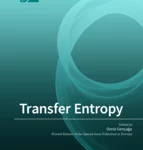
Gencaga, Deniz; Knuth, Kevin; Rossow, William
A recipe for the estimation of information flow in a dynamical system Journal Article
In: Entropy (Basel), vol. 17, no. 1, pp. 438–470, 2015.
Links | BibTeX | Tags: ANALYSIS, ENERGETICS, FEEDBACKS, MODELS
@article{Gencaga2015-xt,
title = {A recipe for the estimation of information flow in a dynamical system},
author = {Deniz Gencaga and Kevin Knuth and William Rossow},
url = {https://www.williambrossow.com/wp-content/uploads/2022/03/entropy-17-00438-v2.pdf, Download file},
doi = {10.3390/e17010438},
year = {2015},
date = {2015-01-01},
urldate = {2015-01-01},
journal = {Entropy (Basel)},
volume = {17},
number = {1},
pages = {438--470},
publisher = {MDPI AG},
keywords = {ANALYSIS, ENERGETICS, FEEDBACKS, MODELS},
pubstate = {published},
tppubtype = {article}
}
2011
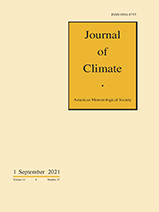
Tselioudis, George; Rossow, William B
Time scales of variability of the tropical atmosphere derived from cloud-defined weather states Journal Article
In: J. Clim., vol. 24, no. 3, pp. 602–608, 2011.
Abstract | Links | BibTeX | Tags: ANALYSIS, MODELS, WEATHER STATE
@article{Tselioudis2011-ty,
title = {Time scales of variability of the tropical atmosphere derived from cloud-defined weather states},
author = {George Tselioudis and William B Rossow},
url = {https://www.williambrossow.com/wp-content/uploads/2022/04/2011_Tselioudis_ts07200r.pdf, Download file},
year = {2011},
date = {2011-02-01},
urldate = {2011-02-01},
journal = {J. Clim.},
volume = {24},
number = {3},
pages = {602--608},
publisher = {\"{A}merican Meteorological Society},
abstract = { The recent analysis of Rossow et al. used a clustering
technique to derive six tropical weather states (WS) based on
mesoscale cloud-type patterns and documented the spatial
distribution of those WS and the modes of variability of the
convective WS in the tropical western Pacific. In this study,
the global tropics are separated into 30° $times$ 30° regions,
and a clustering algorithm is applied to the regional WS
frequency distributions to derive the dominant modes of weather
state variability (or the climate state variability) in each
region. The results show that the whole tropical atmosphere
oscillates between a convectively active and a convectively
suppressed regime with the exception of the eastern parts of the
two ocean basins, where the oscillation is between a
stratocumulus and a trade cumulus regime. The dominant mode of
both those oscillations is the seasonal cycle with the exception
of the eastern Indian and western--central Pacific region, where
El Ni~no frequencies dominate. The transitions between the
convectively active and suppressed regimes produce longwave (LW)
and shortwave (SW) top-of-atmosphere (TOA) radiative differences
that are of opposite sign and of similar magnitude, being of
order 20--30 W m−2 over ocean and 10--20 W m−2 over land and
thus producing an overall balance in the TOA radiative budget.
The precipitation differences between the convectively active
and suppressed regimes are found to be of order 2.5--3 mm day−1
over ocean and 1--2.4 mm day−1 over land. Finally, the
transitions between the stratocumulus and shallow cumulus
regimes produce noticeable TOA SW differences of order 10--20 W
m−2 and very small TOA LW and precipitation differences. The
potential climate feedback implications of the regime radiation
and precipitation differences are discussed."},
keywords = {ANALYSIS, MODELS, WEATHER STATE},
pubstate = {published},
tppubtype = {article}
}
technique to derive six tropical weather states (WS) based on
mesoscale cloud-type patterns and documented the spatial
distribution of those WS and the modes of variability of the
convective WS in the tropical western Pacific. In this study,
the global tropics are separated into 30° $times$ 30° regions,
and a clustering algorithm is applied to the regional WS
frequency distributions to derive the dominant modes of weather
state variability (or the climate state variability) in each
region. The results show that the whole tropical atmosphere
oscillates between a convectively active and a convectively
suppressed regime with the exception of the eastern parts of the
two ocean basins, where the oscillation is between a
stratocumulus and a trade cumulus regime. The dominant mode of
both those oscillations is the seasonal cycle with the exception
of the eastern Indian and western--central Pacific region, where
El Ni~no frequencies dominate. The transitions between the
convectively active and suppressed regimes produce longwave (LW)
and shortwave (SW) top-of-atmosphere (TOA) radiative differences
that are of opposite sign and of similar magnitude, being of
order 20--30 W m−2 over ocean and 10--20 W m−2 over land and
thus producing an overall balance in the TOA radiative budget.
The precipitation differences between the convectively active
and suppressed regimes are found to be of order 2.5--3 mm day−1
over ocean and 1--2.4 mm day−1 over land. Finally, the
transitions between the stratocumulus and shallow cumulus
regimes produce noticeable TOA SW differences of order 10--20 W
m−2 and very small TOA LW and precipitation differences. The
potential climate feedback implications of the regime radiation
and precipitation differences are discussed."
2009

Rossow, W. B.
Increasing greenhouse gases impact local water supplies Miscellaneous
2009.
Links | BibTeX | Tags: ANALYSIS
@misc{nokey,
title = {Increasing greenhouse gases impact local water supplies},
author = {W.B. Rossow },
url = {https://www.williambrossow.com/wp-content/uploads/2022/05/1432208786May2009.pdf, Download file},
year = {2009},
date = {2009-05-02},
urldate = {2009-05-02},
issue = {Vol 19, no. 2, 10-12},
keywords = {ANALYSIS},
pubstate = {published},
tppubtype = {misc}
}
2006

Romanou, A.; Rossow, W. B.; Chou, S. -H.
Decorrelation scales of high resolution turbulent fluxes at the ocean-surface and a method to fill-in gaps in satellite data products Journal Article
In: J. Climate, vol. 19, pp. 3378–3393, 2006.
Links | BibTeX | Tags: ANALYSIS, ENERGETICS
@article{ro03800l,
title = {Decorrelation scales of high resolution turbulent fluxes at the ocean-surface and a method to fill-in gaps in satellite data products},
author = {A. Romanou and W. B. Rossow and S. -H. Chou},
url = {https://www.williambrossow.com/wp-content/uploads/2022/06/2006_Romanou_ro03800l.pdf, Download file},
doi = {10.1175/JCLI3773.1},
year = {2006},
date = {2006-01-01},
urldate = {2006-01-01},
journal = {J. Climate},
volume = {19},
pages = {3378--3393},
keywords = {ANALYSIS, ENERGETICS},
pubstate = {published},
tppubtype = {article}
}
2005
Rossow, W. B.; Tselioudis, G.; Polak, A.; Jakob, C.
Tropical climate described as a distribution of weather states indicated by distinct mesoscale cloud property mixtures Journal Article
In: Geophys. Res. Lett., vol. 32, pp. L21812, 2005.
Links | BibTeX | Tags: ANALYSIS, MODELS, WEATHER STATE
@article{ro09700z,
title = {Tropical climate described as a distribution of weather states indicated by distinct mesoscale cloud property mixtures},
author = {W. B. Rossow and G. Tselioudis and A. Polak and C. Jakob},
url = {https://www.williambrossow.com/wp-content/uploads/2022/06/2005_Rossow_ro09700z.pdf, Download file},
doi = {10.1029/2005GL024584},
year = {2005},
date = {2005-01-01},
urldate = {2005-01-01},
journal = {Geophys. Res. Lett.},
volume = {32},
pages = {L21812},
keywords = {ANALYSIS, MODELS, WEATHER STATE},
pubstate = {published},
tppubtype = {article}
}
2004
Aires, F.; Prigent, C.; Rossow, W. B.
Neural network uncertainty assessment using Bayesian statistics with application to remote sensing: 3. Network Jacobians Journal Article
In: J. Geophys. Res., vol. 109, pp. D10305, 2004.
Links | BibTeX | Tags: ANALYSIS, MODELS
@article{ai02100q,
title = {Neural network uncertainty assessment using Bayesian statistics with application to remote sensing: 3. Network Jacobians},
author = {F. Aires and C. Prigent and W. B. Rossow},
url = {https://www.williambrossow.com/wp-content/uploads/2022/06/2004_Aires_ai02100q.pdf, Download file},
doi = {10.1029/2003JD004175},
year = {2004},
date = {2004-01-01},
urldate = {2004-01-01},
journal = {J. Geophys. Res.},
volume = {109},
pages = {D10305},
keywords = {ANALYSIS, MODELS},
pubstate = {published},
tppubtype = {article}
}

Tselioudis, G.; Rossow, W. B.; Gentilcore, A. N.; Katzfey, J.
The Data Integration for Model Evaluation web site: A one-stop shop for model evaluation Journal Article
In: Bull. Amer. Meteorol. Soc., vol. 85, pp. 830–835, 2004.
Links | BibTeX | Tags: ANALYSIS, MODELS
@article{ts00100w,
title = {The Data Integration for Model Evaluation web site: A one-stop shop for model evaluation},
author = {G. Tselioudis and W. B. Rossow and A. N. Gentilcore and J. Katzfey},
url = {https://www.williambrossow.com/wp-content/uploads/2022/06/2004_Tselioudis_ts00100w.pdf, Download file},
doi = {10.1175/BAMS-85-6-830},
year = {2004},
date = {2004-01-01},
urldate = {2004-01-01},
journal = {Bull. Amer. Meteorol. Soc.},
volume = {85},
pages = {830--835},
keywords = {ANALYSIS, MODELS},
pubstate = {published},
tppubtype = {article}
}
Aires, F.; Prigent, C.; Rossow, W. B.
Neural network uncertainty assessment using Bayesian statistics: A remote sensing application Journal Article
In: Neural Comput., vol. 16, pp. 2415–2458, 2004.
Links | BibTeX | Tags: ANALYSIS, MODELS
@article{ai04100j,
title = {Neural network uncertainty assessment using Bayesian statistics: A remote sensing application},
author = {F. Aires and C. Prigent and W. B. Rossow},
url = {https://www.williambrossow.com/wp-content/uploads/2022/06/2004_Aires_ai04100j.pdf, Download file},
year = {2004},
date = {2004-01-01},
urldate = {2004-01-01},
journal = {Neural Comput.},
volume = {16},
pages = {2415--2458},
keywords = {ANALYSIS, MODELS},
pubstate = {published},
tppubtype = {article}
}
Aires, F.; Prigent, C.; Rossow, W. B.
Neural network uncertainty assessment using Bayesian statistics with application to remote sensing: 2. Output errors Journal Article
In: J. Geophys. Res., vol. 109, pp. D10304, 2004.
Links | BibTeX | Tags: ANALYSIS, MODELS
@article{ai01100t,
title = {Neural network uncertainty assessment using Bayesian statistics with application to remote sensing: 2. Output errors},
author = {F. Aires and C. Prigent and W. B. Rossow},
url = {https://www.williambrossow.com/wp-content/uploads/2022/06/2004_Aires_ai01100t.pdf, Download file},
doi = {10.1029/2003JD004174},
year = {2004},
date = {2004-01-01},
urldate = {2004-01-01},
journal = {J. Geophys. Res.},
volume = {109},
pages = {D10304},
keywords = {ANALYSIS, MODELS},
pubstate = {published},
tppubtype = {article}
}
Aires, F.; Prigent, C.; Rossow, W. B.
Temporal interpolation of global surface skin temperature diurnal cycle over land under clear and cloudy conditions Journal Article
In: J. Geophys. Res., vol. 109, pp. D04313, 2004.
Links | BibTeX | Tags: ANALYSIS, MODELS
@article{ai00100w,
title = {Temporal interpolation of global surface skin temperature diurnal cycle over land under clear and cloudy conditions},
author = {F. Aires and C. Prigent and W. B. Rossow},
url = {https://www.williambrossow.com/wp-content/uploads/2022/06/2004_Aires_ai00100w.pdf, Download file},
doi = {10.1029/2003JD003527},
year = {2004},
date = {2004-01-01},
urldate = {2004-01-01},
journal = {J. Geophys. Res.},
volume = {109},
pages = {D04313},
keywords = {ANALYSIS, MODELS},
pubstate = {published},
tppubtype = {article}
}
2003
Aires, F.; Rossow, W. B.
In: Q. J. Roy. Meteorol. Soc., vol. 129, pp. 239–275, 2003.
Links | BibTeX | Tags: ANALYSIS, ENERGETICS, FEEDBACKS, MODELS
@article{ai09000a,
title = {Inferring instantaneous, multivariate and nonlinear sensitivities for the analysis of feedback processes in a dynamical system: The Lorenz model case study},
author = {F. Aires and W. B. Rossow},
url = {https://www.williambrossow.com/wp-content/uploads/2022/06/2003_Aires_ai09000a.pdf, Download file},
doi = {10.1256/qj.01.174},
year = {2003},
date = {2003-01-01},
urldate = {2003-01-01},
journal = {Q. J. Roy. Meteorol. Soc.},
volume = {129},
pages = {239--275},
keywords = {ANALYSIS, ENERGETICS, FEEDBACKS, MODELS},
pubstate = {published},
tppubtype = {article}
}
Randall, D.; Krueger, S.; Bretherton, C.; Curry, J.; Duynkerke,; Moncireff, M.; Ryan, B.; Starr, D.; Miller, M.; Rossow, W.; Tselioudis, G.; Wielicki, B.
Confronting models with data: The GEWEX Cloud Systems Study Journal Article
In: Bull. Amer. Meteorol. Soc., vol. 84, pp. 455–469, 2003.
Links | BibTeX | Tags: ANALYSIS, MODELS
@article{ra09200l,
title = {Confronting models with data: The GEWEX Cloud Systems Study},
author = {D. Randall and S. Krueger and C. Bretherton and J. Curry and Duynkerke and M. Moncireff and B. Ryan and D. Starr and M. Miller and W. Rossow and G. Tselioudis and B. Wielicki},
url = {https://www.williambrossow.com/wp-content/uploads/2022/06/2003_Randall_ra09200l.pdf, Download file},
doi = {10.1175/BAMS-84-4-455},
year = {2003},
date = {2003-01-01},
urldate = {2003-01-01},
journal = {Bull. Amer. Meteorol. Soc.},
volume = {84},
pages = {455--469},
keywords = {ANALYSIS, MODELS},
pubstate = {published},
tppubtype = {article}
}
2002
Aires, F.; Rossow, W. B.; Scott, N.; Chedin, A.
In: J. Geophys. Res., vol. 107, no. D22, pp. 4619, 2002.
Links | BibTeX | Tags: ANALYSIS, MODELS
@article{ai08000d,
title = {Remote sensing from the infrared atmospheric sounding interferometer instrument. 1. Compression, de-noising, and first guess retrieval algorithms},
author = {F. Aires and W. B. Rossow and N. Scott and A. Chedin},
url = {https://www.williambrossow.com/wp-content/uploads/2022/06/2002_Aires_ai08000d.pdf, Download file},
doi = {10.1029/2001JD000955},
year = {2002},
date = {2002-01-01},
urldate = {2002-01-01},
journal = {J. Geophys. Res.},
volume = {107},
number = {D22},
pages = {4619},
keywords = {ANALYSIS, MODELS},
pubstate = {published},
tppubtype = {article}
}
Luo, Z.; Rossow, W. B.; Inoue, T.; Stubenrauch, C. J.
Did the eruption of the Mt. Pinatubo volcano affect cirrus properties? Journal Article
In: J. Climate, vol. 15, pp. 2806–2820, 2002.
Links | BibTeX | Tags: AEROSOLS, ANALYSIS, CLOUD PROPERTIES, MODELS
@article{lu01000b,
title = {Did the eruption of the Mt. Pinatubo volcano affect cirrus properties?},
author = {Z. Luo and W. B. Rossow and T. Inoue and C. J. Stubenrauch},
url = {https://www.williambrossow.com/wp-content/uploads/2022/06/2002_Luo_lu01000b.pdf, Download file},
doi = {10.1175/1520-0442(2002)015%3C2806%3ADTEOTM%3E2.0.CO;2},
year = {2002},
date = {2002-01-01},
urldate = {2002-01-01},
journal = {J. Climate},
volume = {15},
pages = {2806--2820},
keywords = {AEROSOLS, ANALYSIS, CLOUD PROPERTIES, MODELS},
pubstate = {published},
tppubtype = {article}
}
Aires, F.; Ché9din, A.; Scott, N.; Rossow, W. B.
A regularized neural network approach for retrieval of atmospheric and surface temperatures with the IASI instrument Journal Article
In: J. Appl. Meteorol., vol. 41, pp. 144–159, 2002.
Links | BibTeX | Tags: ANALYSIS, ENERGETICS, FEEDBACKS, MODELS, SURFACE PROPERTIES
@article{ai06000k,
title = {A regularized neural network approach for retrieval of atmospheric and surface temperatures with the IASI instrument},
author = {F. Aires and A. Ch\'{e}9din and N. Scott and W. B. Rossow},
url = {https://www.williambrossow.com/wp-content/uploads/2022/06/2002_Aires_ai06000k.pdf, Download file},
doi = {10.1175/1520-0450(2002)041%3C0144%3AARNNAF%3E2.0.CO;2},
year = {2002},
date = {2002-01-01},
urldate = {2002-01-01},
journal = {J. Appl. Meteorol.},
volume = {41},
pages = {144--159},
keywords = {ANALYSIS, ENERGETICS, FEEDBACKS, MODELS, SURFACE PROPERTIES},
pubstate = {published},
tppubtype = {article}
}
Aires, F.; Rossow, W. B.; Ché9din, A.
Rotation of EOFs by the Independent Component Analysis: Toward solving the mixing problem in the decomposition of geophysical time series Journal Article
In: J. Atmos. Sci., vol. 59, pp. 111–123, 2002.
Links | BibTeX | Tags: ANALYSIS, MODELS
@article{ai05000n,
title = {Rotation of EOFs by the Independent Component Analysis: Toward solving the mixing problem in the decomposition of geophysical time series},
author = {F. Aires and W. B. Rossow and A. Ch\'{e}9din},
url = {https://www.williambrossow.com/wp-content/uploads/2022/06/2002_Aires_ai05000n.pdf, Download file},
doi = {10.1175/1520-0469(2002)059%3C0111%3AROEBTI%3E2.0.CO;2},
year = {2002},
date = {2002-01-01},
urldate = {2002-01-01},
journal = {J. Atmos. Sci.},
volume = {59},
pages = {111--123},
keywords = {ANALYSIS, MODELS},
pubstate = {published},
tppubtype = {article}
}
2001
Aires, F.; Prigent, C.; Rossow, W. B.; Rothstein, M.
In: J. Geophys. Res., vol. 106, pp. 14887–14907, 2001.
Links | BibTeX | Tags: ANALYSIS, ENERGETICS, FEEDBACKS, MODELS, PRECIPITATION, WATER VAPOR
@article{ai04000r,
title = {A new neural network approach including first-guess for retrieval of atmospheric water vapor, cloud liquid water path, surface temperature and emissivities over land from satellite microwave observations},
author = {F. Aires and C. Prigent and W. B. Rossow and M. Rothstein},
url = {https://www.williambrossow.com/wp-content/uploads/2022/06/2001_Aires_ai04000r.pdf, Download file},
doi = {10.1029/2001JD900085},
year = {2001},
date = {2001-01-01},
urldate = {2001-01-01},
journal = {J. Geophys. Res.},
volume = {106},
pages = {14887--14907},
keywords = {ANALYSIS, ENERGETICS, FEEDBACKS, MODELS, PRECIPITATION, WATER VAPOR},
pubstate = {published},
tppubtype = {article}
}
1998

Wang, J.; Rossow, W. B.
Effects of cloud vertical structure on atmospheric circulation in the GISS GCM Journal Article
In: J. Climate, vol. 11, pp. 3010–3029, 1998.
Links | BibTeX | Tags: ANALYSIS, ENERGETICS, FEEDBACKS, MODELS
@article{wa03000u,
title = {Effects of cloud vertical structure on atmospheric circulation in the GISS GCM},
author = {J. Wang and W. B. Rossow},
url = {https://www.williambrossow.com/wp-content/uploads/2022/07/1998_Wang_wa03000u.pdf, Download file},
doi = {10.1175/1520-0442(1998)011%3C3010%3AEOCVSO%3E2.0.CO;2},
year = {1998},
date = {1998-01-01},
urldate = {1998-01-01},
journal = {J. Climate},
volume = {11},
pages = {3010--3029},
keywords = {ANALYSIS, ENERGETICS, FEEDBACKS, MODELS},
pubstate = {published},
tppubtype = {article}
}
1997
Briand, Vincent; Stubenrauch, Claudia J; Rossow, William B; Walker, A W; Holz, Ralf
Scene identification for ScaRaB data: the ISCCP approach Proceedings Article
In: Haigh, Joanna D (Ed.): Satellite Remote Sensing of Clouds and the Atmosphere II, SPIE, London, United Kingdom, 1997.
Abstract | BibTeX | Tags: ANALYSIS, MODELS
@inproceedings{Briand1997-qn,
title = {Scene identification for ScaRaB data: the ISCCP approach},
author = {Vincent Briand and Claudia J Stubenrauch and William B Rossow and A W Walker and Ralf Holz},
editor = {Joanna D Haigh},
year = {1997},
date = {1997-01-01},
urldate = {1997-01-01},
booktitle = {Satellite Remote Sensing of Clouds and the Atmosphere II},
publisher = {SPIE},
address = {London, United Kingdom},
abstract = {\"{A} precise scene identification is important for Earth Radiation
Budget Experiments to study in more detail cloud radiative
effects and also to develop specific angular dependence models
for the conversion of measured radiances into radiative fluxes.
For this purpose, the ScaRaB radiometer includes two
narrow-band channels in addition to the broad- band channels
which retrieve earth emitted LW and solar reflected SW
radiation. By applying the ISCCP (International Satellite Cloud
Climatology Project) algorithm on the ScaRaB data, clear sky LW
fluxes have been improved compared to ERBE (Earth Radiation
Budget Experiment), especially in the tropics where atmospheric
water vapor is high."},
keywords = {ANALYSIS, MODELS},
pubstate = {published},
tppubtype = {inproceedings}
}
Budget Experiments to study in more detail cloud radiative
effects and also to develop specific angular dependence models
for the conversion of measured radiances into radiative fluxes.
For this purpose, the ScaRaB radiometer includes two
narrow-band channels in addition to the broad- band channels
which retrieve earth emitted LW and solar reflected SW
radiation. By applying the ISCCP (International Satellite Cloud
Climatology Project) algorithm on the ScaRaB data, clear sky LW
fluxes have been improved compared to ERBE (Earth Radiation
Budget Experiment), especially in the tropics where atmospheric
water vapor is high."
Stubenrauch, C. J.; Genio, A. D. Del; Rossow, W. B.
Implementation of subgrid cloud vertical structure inside a GCM and its effect on the radiation budget Journal Article
In: J. Climate, vol. 10, pp. 273–287, 1997.
Links | BibTeX | Tags: ANALYSIS, MODELS
@article{st00800v,
title = {Implementation of subgrid cloud vertical structure inside a GCM and its effect on the radiation budget},
author = {C. J. Stubenrauch and A. D. Del Genio and W. B. Rossow},
url = {https://www.williambrossow.com/wp-content/uploads/2022/08/1997_Stubenrauch_st00800v.pdf, Download file},
doi = {10.1175/1520-0442(1997)010%3C0273%3AIOSCVS%3E2.0.CO;2},
year = {1997},
date = {1997-01-01},
urldate = {1997-01-01},
journal = {J. Climate},
volume = {10},
pages = {273--287},
keywords = {ANALYSIS, MODELS},
pubstate = {published},
tppubtype = {article}
}
1995
Rossow, W. B.; Cairns, B.
Monitoring changes of clouds Journal Article
In: Climatic Change, vol. 31, pp. 175–217, 1995.
Links | BibTeX | Tags: ANALYSIS, CLOUD PROPERTIES, MODELS, WEATHER STATE
@article{ro07000g,
title = {Monitoring changes of clouds},
author = {W. B. Rossow and B. Cairns},
url = {https://www.williambrossow.com/wp-content/uploads/2022/08/1995_Rossow_ro07000g.pdf, Download file},
doi = {10.1007/BF01095151},
year = {1995},
date = {1995-01-01},
urldate = {1995-01-01},
journal = {Climatic Change},
volume = {31},
pages = {175--217},
keywords = {ANALYSIS, CLOUD PROPERTIES, MODELS, WEATHER STATE},
pubstate = {published},
tppubtype = {article}
}
1991
W. Yu, G. Seze; Desbois, M.
Comparison of radiance fields observed by satellite and simulated by the LMD general circulation model Journal Article
In: Dyn. Atmos. Oceans, vol. 16, no. 1-2, pp. 147–165, 1991.
Abstract | BibTeX | Tags: ANALYSIS, MODELS
@article{Yu1991-pi,
title = {Comparison of radiance fields observed by satellite and simulated by the LMD general circulation model},
author = {Yu, W., G. Seze, W.B. Rossow, H. Le Treut and M. Desbois},
year = {1991},
date = {1991-10-01},
urldate = {1991-10-01},
journal = {Dyn. Atmos. Oceans},
volume = {16},
number = {1-2},
pages = {147--165},
publisher = {Elsevier BV},
abstract = {\"{A} time series of International Satellite Cloud Climatology
Project (ISCCP) B2 data has been used to study the
spatio-temporal variability of cloud radiance fields and to
compare it with similar diagnostics obtained from a numerical
simulation with the Laboratoire de M\'{e}t\'{e}orologie
Dynamique general circulation model (GCM). We first compare
zonal means of the observed and simulated fluxes: the largest
differences appear mainly above land, probably due to a diurnal
cycle effect. A computation of the cloud radiative forcing is
made to distinguish model errors in the clear sky or in cloudy
areas: it shows that the radiative effect of the simulated
clouds is generally smaller than that of observed ones. The
influence of the spatial resolution on the variability of the
visible and infrared radiance fields is examined. The results
show that the variability due to the better spatial resolution
of the satellite data cannot be simulated by the GCM; however,
the variability of the simulated radiances is comparable to that
of the satellite data when they are spatially averaged on the
GCM mesh. The temporal variability of the spatially averaged
observed and simulated radiances has a similar spatial
distribution but the model results are slightly smaller. The
memory of the precedent state shown by the autocorrelation
function is longer for the GCM than for the observation.
However, the periods obtained by a spectral analysis in the
mid-latitude regions are approximately the same in the
observation and the simulation."},
keywords = {ANALYSIS, MODELS},
pubstate = {published},
tppubtype = {article}
}
Project (ISCCP) B2 data has been used to study the
spatio-temporal variability of cloud radiance fields and to
compare it with similar diagnostics obtained from a numerical
simulation with the Laboratoire de Météorologie
Dynamique general circulation model (GCM). We first compare
zonal means of the observed and simulated fluxes: the largest
differences appear mainly above land, probably due to a diurnal
cycle effect. A computation of the cloud radiative forcing is
made to distinguish model errors in the clear sky or in cloudy
areas: it shows that the radiative effect of the simulated
clouds is generally smaller than that of observed ones. The
influence of the spatial resolution on the variability of the
visible and infrared radiance fields is examined. The results
show that the variability due to the better spatial resolution
of the satellite data cannot be simulated by the GCM; however,
the variability of the simulated radiances is comparable to that
of the satellite data when they are spatially averaged on the
GCM mesh. The temporal variability of the spatially averaged
observed and simulated radiances has a similar spatial
distribution but the model results are slightly smaller. The
memory of the precedent state shown by the autocorrelation
function is longer for the GCM than for the observation.
However, the periods obtained by a spectral analysis in the
mid-latitude regions are approximately the same in the
observation and the simulation."
Seze, G.; Rossow, W. B.
Effects of satellite data resolution on measuring the space/time variations of surfaces and clouds Journal Article
In: Int. J. Remote Sens., vol. 12, pp. 921–952, 1991.
Links | BibTeX | Tags: ANALYSIS, MODELS
@article{se07000g,
title = {Effects of satellite data resolution on measuring the space/time variations of surfaces and clouds},
author = {G. Seze and W. B. Rossow},
url = {https://www.williambrossow.com/wp-content/uploads/2022/08/1991_Seze_Rossow_2.pdf, Download file},
doi = {10.1080/01431169108929703},
year = {1991},
date = {1991-01-01},
urldate = {1991-01-01},
journal = {Int. J. Remote Sens.},
volume = {12},
pages = {921--952},
keywords = {ANALYSIS, MODELS},
pubstate = {published},
tppubtype = {article}
}
Seze, G.; Rossow, W. B.
Time-cumulated visible and infrared radiance histograms used as descriptors of surface and cloud variations Journal Article
In: Int. J. Remote Sens., vol. 12, pp. 877–920, 1991.
Links | BibTeX | Tags: ANALYSIS, MODELS, WEATHER STATE
@article{se06000k,
title = {Time-cumulated visible and infrared radiance histograms used as descriptors of surface and cloud variations},
author = {G. Seze and W. B. Rossow},
url = {https://www.williambrossow.com/wp-content/uploads/2022/08/1991_Seze_Rossow_1.pdf, Download file},
doi = {10.1080/01431169108929702},
year = {1991},
date = {1991-01-01},
urldate = {1991-01-01},
journal = {Int. J. Remote Sens.},
volume = {12},
pages = {877--920},
keywords = {ANALYSIS, MODELS, WEATHER STATE},
pubstate = {published},
tppubtype = {article}
}
1984
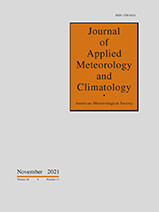
Rossow, W. B.; Garder, L.
Selection of a map grid for data analysis and archival Journal Article
In: J. Clim. Appl. Meteorol., vol. 23, pp. 1253–1257, 1984.
Links | BibTeX | Tags: ANALYSIS, ISCCP, MODELS
@article{ro07300k,
title = {Selection of a map grid for data analysis and archival},
author = {W. B. Rossow and L. Garder},
url = {https://www.williambrossow.com/wp-content/uploads/2022/08/Journal-of-Applied-Meteorology-and-Climatology-Selection-of-a-Map-Grid-for-Data-Analysis-and-Archival.pdf, Download file},
doi = {10.1175/1520-0450(1984)023%3C1253%3ASOAMGF%3E2.0.CO;2},
year = {1984},
date = {1984-01-01},
urldate = {1984-01-01},
journal = {J. Clim. Appl. Meteorol.},
volume = {23},
pages = {1253--1257},
keywords = {ANALYSIS, ISCCP, MODELS},
pubstate = {published},
tppubtype = {article}
}

Rind, D.; Rossow, W. B.
The effects of physical processes on Hadley circulation Journal Article
In: J. Atmos. Sci., vol. 41, pp. 479–507, 1984.
Links | BibTeX | Tags: ANALYSIS, ENERGETICS, FEEDBACKS, MODELS
@article{ri06300n,
title = {The effects of physical processes on Hadley circulation},
author = {D. Rind and W. B. Rossow},
url = {https://www.williambrossow.com/wp-content/uploads/2022/03/1984_Rind_ri06300n.pdf, Download file},
doi = {10.1175/1520-0469(1984)041%3C0479%3ATEOPPO%3E2.0.CO;2},
year = {1984},
date = {1984-01-01},
urldate = {1984-01-01},
journal = {J. Atmos. Sci.},
volume = {41},
pages = {479--507},
keywords = {ANALYSIS, ENERGETICS, FEEDBACKS, MODELS},
pubstate = {published},
tppubtype = {article}
}
